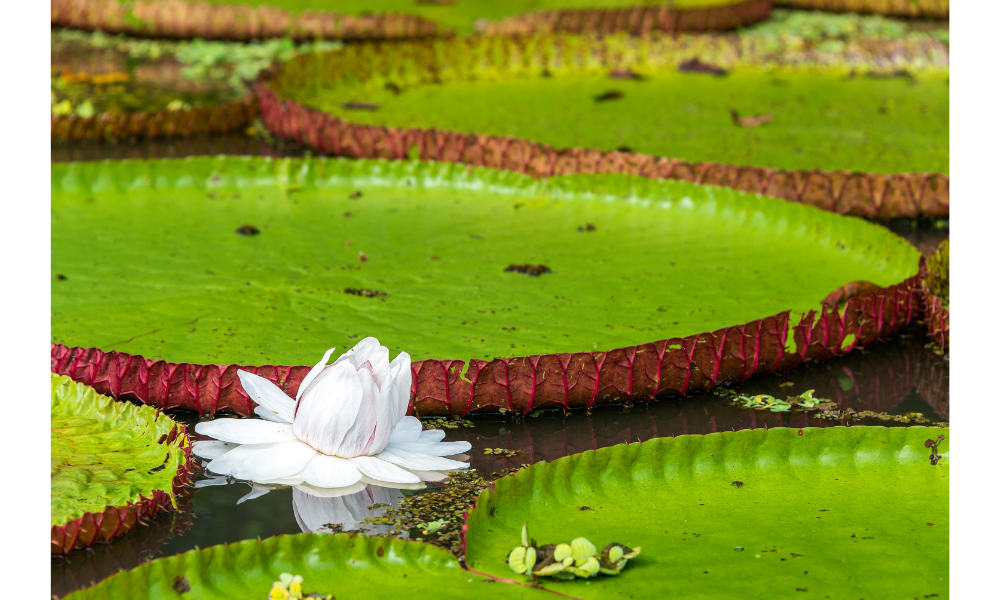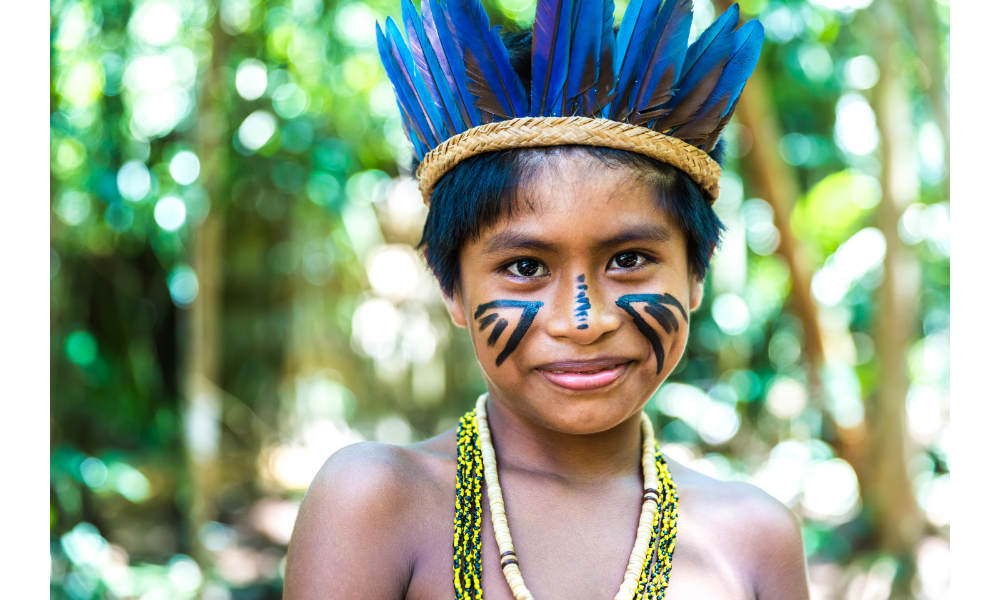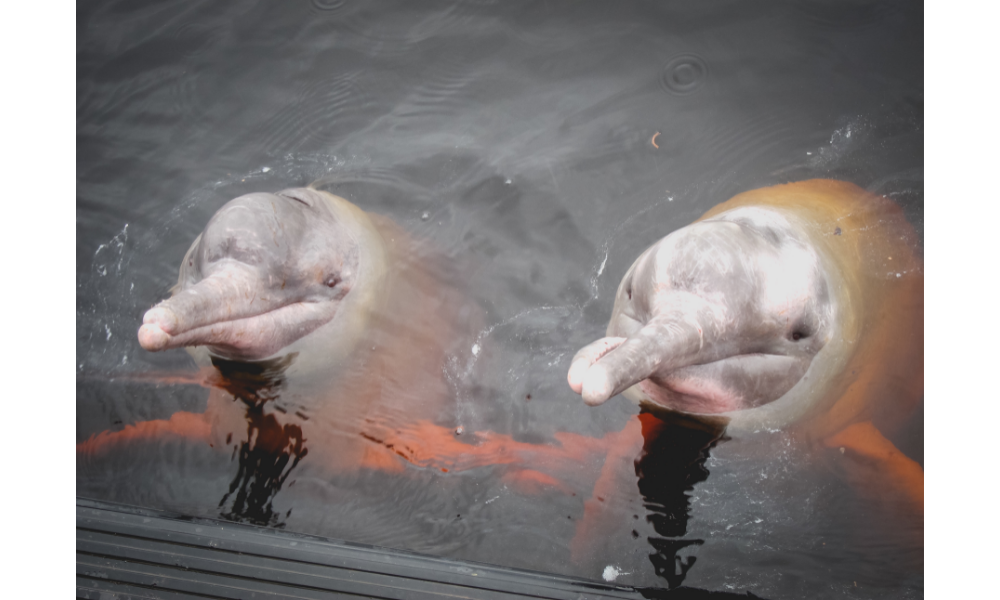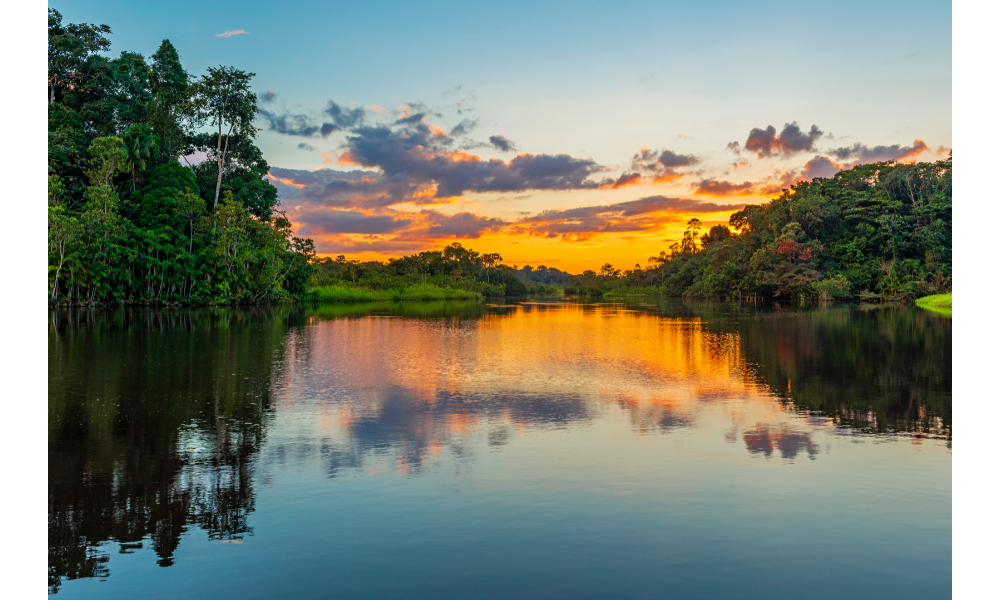Table of contents
Meet the main legends of the Amazon rainforest!

Amazonian legends are oral narratives that are generally the fruit of the popular imagination and are kept alive over time due to the ancient peoples who passed their stories from generation to generation.
In this article, the main legends of the Amazon forest will be presented, such as, for example, the legend of the Boto, which transformed into a beautiful man on full moon nights, the legend of the Uirapuru, a beautiful bird that wanted to live next to his beloved or the legend of the Victoria Regia, a beautiful Indian who wanted to be a star to live next to the moon.
Also, understand what a legend is, how legends can influence children and adults, and how Amazonian cultural identity is built. To learn more, read this article to the end!
Understanding the Amazon legends

Did you know that legend and myth are not the same thing? In fact, what is a legend? Next, understand these questions and also learn about the cultural identity of the State of Amazonas and how legends influence children and adults. Check below.
What's a legend?
A legend is usually a popular fact told in a fanciful way. These stories are transmitted orally and passed from generation to generation. However, these tales are mixed with historical and unreal facts. In addition, the same legend can suffer changes over time, stirring even more the imagination of a people.
Thus, each legend has different characteristics, according to its people and region. As the population renews itself, the story tends to increase, making it more elaborate, which can be called folkloric or urban legends. However, legends do not have any scientific proof.
Difference between legends and myths
Legends and myths may seem to be synonymous, however, they are different. Legends are oral and imaginary narratives. These stories change over time and mix with true and unreal facts. However, they cannot be proven.
Myths, on the other hand, consist of stories created to clarify facts that could not be understood. Therefore, they use symbols, hero characters and demigods with human characteristics to explain, for example, the origin of the world and justify certain events that science is not able to.
Amazonian cultural identity
The construction of the Amazonian cultural identity is complex, as several factors have made it so rich and that is renewed until today. The mixture of indigenous, black, European and other peoples brought their customs, traditions and social diversity.
In addition, the religions coming from these peoples, such as Catholicism, Umbanda, Protestantism and the knowledge of the Indians have transformed the Amazonian culture so diverse and so plural.
Influence of legends for children and adults
Keeping legends alive is fundamental, for without the stories that cross time and generations, the culture and identity of a people can be lost.
Legends have the power to positively influence children, as they stimulate reading and expand their imagination. Moreover, legends help to form people more aware of their culture and to preserve nature and natural resources, since many of these stories have characters that protect forests and animals.
In adults, the legends are perpetuated, because besides disseminating the stories they learned as children, they help preserve the culture, identity and their customs, such as, for example, one of the most famous legends in Brazil, the one about the Boi Bumbá that gained visibility and diversity with the annual presentations of the Parintins festivities.
Main Brazilian Amazonian legends

In this topic, we will show you the main Brazilian Amazonian legends that stir even today with people's imagination. It is the case of the legend of Matinta Pereira, a witch that can curse and haunt if someone does not give what was promised to her. Check out these and other legends below.
Legend of the Curupira
The legend of the Curupira came from the indigenous people who told that there was a short boy with red hair and his feet turned backwards. The Curupira is the protector of the forests and has his feet turned around to deceive hunters and not be captured by them. It is said that this creature runs so fast that it is impossible to catch him.
To prevent the forest from being devastated, he produces a deafening noise in order to drive away the evildoers. However, when Curupira realizes that people are not harming the forest, they are only harvesting fruit to survive.
Legend of Iara
Another legend of indigenous origin is about the Iara or water mother - an Indian warrior who aroused the envy of her brothers. When they tried to take her life, Iara killed her brothers to defend herself and her father, the Pajé, as punishment threw her into the meeting of the Rio Negro and Solimões.
The fish rescued her by taking Iara to the surface of the river on a full moon night, transforming her into half fish and half woman, that is, from the waist up she had a woman's body and from the waist down a fish tail. Then she was transformed into a beautiful mermaid.
So she began to bathe in the river and with her beautiful singing seduced the men who passed by. Iara attracted these men and took them to the bottom of the river. Those who managed to survive went crazy and only with the help of a Pajé would they return to normal.
Legend of the Boto
A man dressed in white, wearing a hat of the same colour and with a pleasant appearance always appears at night to seduce the most beautiful girl at the ball. He takes her to the bottom of the river and impregnates her. At dawn, he transforms himself again into a pink river dolphin, leaving the damsel to her fate.
This is the legend of the Boto, a story told by the Indians, in which the pink animal transforms into a handsome man on the nights of the full moon in order to seduce an unmarried girl during the month of June, when the June festivities take place. This story is told whenever a woman gets pregnant and the father of the baby is not known.
Legend of Matinta Pereira
As night falls on the houses, an ominous bird emits a shrill sound and, to stop the whistling, the inhabitant must offer smoke, or something else. The next morning, an old woman appears carrying the curse of Matinta Pereira and demands what was promised. If the promise is not kept, the old woman curses all the inhabitants of the house.
Legend has it that when Matinta Pereira is about to die, she asks a woman: "Who wants? Who wants?" If they answer "I want", thinking it is money or a gift, the curse passes to the person who answered.
Legend of the Boi Bumbá
Francisco and Catarina are a slave couple who are expecting a child. To satisfy his wife's desire to eat ox tongue, Chico decides to kill one of his master's oxen, the farmer. Without knowing it, he has killed the most beloved ox.
Upon finding the ox dead, the farmer called a shaman to resuscitate it. When the ox woke up, it made movements as if celebrating and its owner decided to celebrate its rebirth with the whole town. Thus began the legend of the Boi Bumbá and also began one of the most traditional festivals of the Amazon.
Legend of the Caipora
Legend has it that an Indian warrior, short in stature, with red skin and hair and green teeth, lives to protect the forest and the animals. Called Caipora, she possesses unusual strength and with her agility it is impossible for the hunter to defend himself.
In addition, he emits sounds and makes traps to confuse those who try to harm the forest. Caipora also has a gift, that of resurrecting animals. To enter the forest, it is necessary to please the Indian woman by leaving a gift, such as a roll of smoke leaning against a tree.
However, if it mistreats the animals, especially pregnant females, it shows no mercy and takes revenge on the hunters with violence.
Legend of the Big Snake
The Cobra Grande, which is also called Boiúna, is a gigantic snake that abandoned the forest to live in the depths of the rivers. When it decides to leave for the mainland, it crawls and leaves its furrows in the earth, which become the igarapés (streams).
Legend has it that the Cobra Grande transforms itself into boats or something else to swallow people who pass by the river. Some indigenous tales tell that an Indian woman became pregnant by the Boiúna and when she gave birth to twins, she threw them into the river, given her great dissatisfaction.
Snake-children were born: a boy named Honorato, who did nothing to anyone, and a girl named Maria. Very wicked, she practiced mischief to humans and animals. Due to her cruelty, her brother decided to kill her.
Uirapuru Legend
An impossible love between a warrior and the daughter of the tribe's Chief made the man beg the God Tupã to transform him into a bird, the Uirapuru, so that he would not leave his beloved and, with his song, make her happy.
However, the legend reveals that the cacique was so amazed by the bird's beautiful song that he decided to chase it so that Uirapuru would sing only for him. The bird then fled into the forest and only came out at night to sing for the girl, wishing she would realize that the bird is the warrior, so that they could finally be together.
Legend of Mapinguari
The legend of Mapinguari tells that a very brave and fearless warrior died during a battle. Due to his strength, mother nature decided to resurrect him, transforming him into a monster to protect the forest from hunters.
The elders tell that he was big, hairy, with one eye in the middle of his forehead and a huge mouth on his belly. In addition, Mapinguari emitted a sound that could be confused with the cries of hunters, and whoever answered him was shot.
Legend of the Pirarucu
A young Indian named Pirarucu belonged to the indigenous tribe of the Uaiás. Despite his strength and bravery, he had a proud, arrogant and mean side. Pindorô, the chief of the tribe, was his father and was a kind man.
When his father was not around, Pirarucu killed the other Indians for no reason. Unhappy with these barbarities, Tupã, decided to punish him and summoned Polo, the lightning, and the goddess of the torrents, Iururaruaçu, so that the young Indian would face the worst of the storms when he went fishing in the Tocantins River.
Even with the flood that fell upon him, Pirarucu was not intimidated. With a strong lightning strike striking his heart, the Indian, still alive, fell into the river and the god Tupã transformed him into a terrible huge, black fish with a red tail. And so he lives alone in the depths of the waters and was never seen again.
Guarana Legend
Having difficulties having children, the couple of the Maués tribe asked the god Tupã to grace them with a baby. Their request was accepted and a beautiful boy was born. He became a healthy child, gentle, loved to pick fruits in the forest and besides that, he was very loved by the whole village, except by Jurupari, the god of darkness, capable of doing terrible things.
As time passed, he became envious of the child. And in a moment of distraction, while the child was alone in the forest, Jurupari transformed into a snake and with his lethal venom killed the boy. At that moment, enraged, Tupã threw lightning and thunder over the village to warn what had happened.
Tupã asked the mother to plant the child's eyes in the place where she was found and so the request was granted. Soon, the guaraná was born, a tasty fruit and its seeds resemble human eyes.
Legend of Mount Roraima
The legend of Mount Roraima is told by the Macuxis, South American indigenous tribe that inhabit the state of Roraima. The elders say that the land was flat and fertile. Everyone lived in abundance: there was plenty of food and water, a paradise on Earth. However, it was noticed that a different fruit was being born, the banana tree.
The shamans then decided that that fruit was sacred, and therefore should not be touched. All the Indians were respecting the decision, until one morning they noticed that the banana tree was cut down and before the culprit could be found, the sky darkened and lightning and thunder echoed, and the earth opened up and all the animals went away.
The waters dissipated and from the ground began to sprout walls and rose up to where they could touch the clouds. Thus, Mount Roraima was born. Even today, it is believed that tears come out of the rocks of the mountain, lamenting what happened.
Legend of the Xingu and Amazon Rivers
The oldest Indians reveal that where there are the Xingu and Amazon rivers were dry and only the Juriti bird had all the water in the region, keeping it in three drums. Very thirsty, the three children of the shaman Cinãa, went to ask the bird for water. The bird refused and asked the children why their powerful father did not give them water.
Very sad, they returned and their father asked them not to go and ask for water for Juruti. Unhappy with the refusal, the boys returned and broke the three drums and all the water began to flow and the bird turned into a big fish. One of the sons, Rubiatá was swallowed by the fish, leaving only his legs out.
The fish began to chase the other brothers who ran as fast as they could spreading the waters and created the Xingu River. They ran to the Amazon and managed to catch Rubiatá, already lifeless, they cut his legs and blew his blood which brought him back to life. Then they threw the water into the Amazon creating a wide river.
Legend of the Royal Victory
Called Jaci (the moon) by the Indians, it became the passion of Naiá, one of the most beautiful Indians of her tribe. Whenever she saw the beautiful and shining moon reflecting its image in the river, Naiá wanted to touch it, to become a star and go live with it in the sky.
After several attempts to touch Jaci, Naiá in her innocence thought that the moon had come down in the river to bathe and when she tried to approach it, she fell and drowned. Feeling sorry for the young Indian, the moon, instead of turning her into a star, decided that she would shine in the river. She created a beautiful flower that opens on moonlit nights, the Victoria Regia.
The Amazon has a huge ethnic and cultural diversity!

Known for its biodiversity and, mainly, for sheltering the largest forest in the world, known as "the lung of the world", the Amazon is culturally rich, thanks to its ethnic diversity.
The Amazon legends, traditionally transmitted orally, are an example of how to perpetuate the culture from generation to generation. Disseminating the stories, customs and popular wisdom are extremely important so that children and young people can learn where they came from and thus continue to keep their people alive.
Therefore, the Amazon legends have a fundamental role, not only in spreading their fanciful and mysterious stories, but also, through them, to form more conscious citizens with their origins and to preserve their environment.

